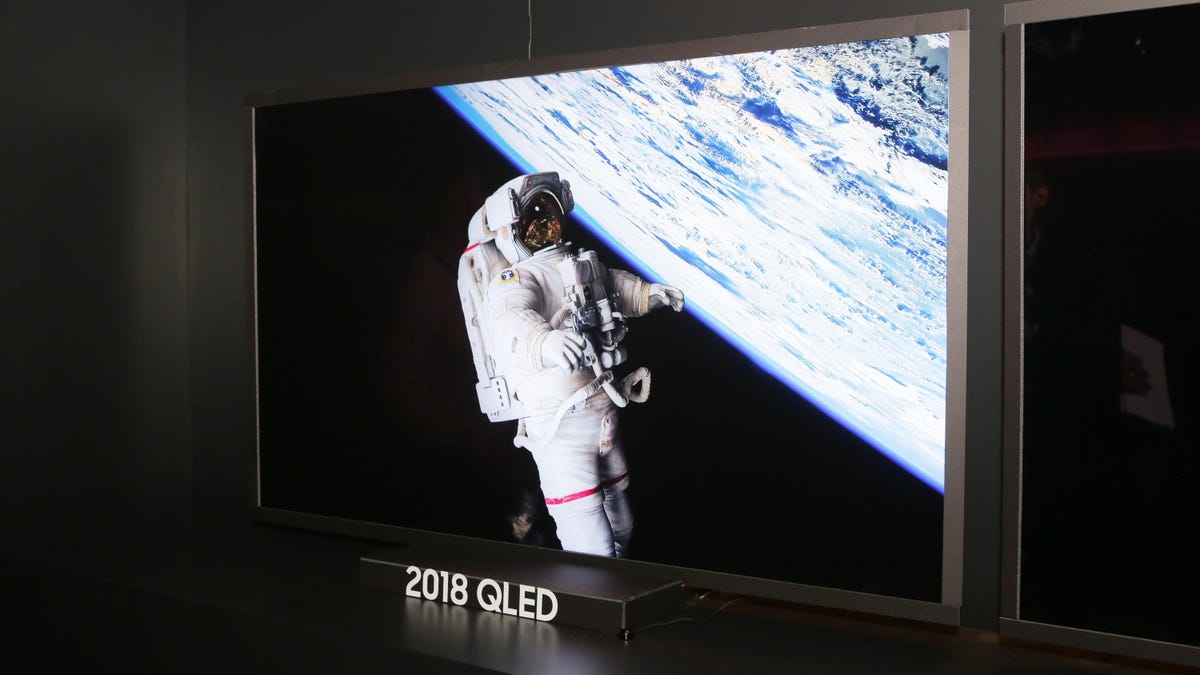Samsung's best TV uses QLED, local dimming to challenge OLED
The biggest TV maker in the world debuts a tricked-out LCD with a redesigned panel augmented by quantum dots and full array local dimming.

Samsung still doesn't make TVs that use OLED display technology, but at CES 2018 its best LCD TVs are trying harder than ever to topple OLED's image quality dominance.
Samsung's 2018 flagship LCD, which at this point remains unnamed, follows in the footsteps of its 2017 predecessors by augmenting the liquid crystals with quantum dots -- hence the "Q" in QLED. But this year, Samsung has a few new tricks up its sleeve.
The company has completely redesigned the LCD panel to better block interior light leakage, an Achilles heel of LCD displays. It uses what Samsung calls a scattering pattern to control the beam form and widen viewing angles, addressing another LCD weakness. And it takes on OLED's biggest advantage -- perfectly dark black areas that create an infinite contrast -- with a full-array local dimming LED backlight and an "antiblooming algorithm" aimed at illuminating only the parts of the image that need it.
Whether the set is as good or better than the OLED TVs produced by LG and Sony is a question that will have to wait until I can review one, but equally important is the price. Samsung's 2017 flagship TV, the Q9, costs $3,500 in the US for the 65-inch size, which is $700 more than the 65-inch LG C7P OLED TV. I'd be surprised if the 2018 version was any cheaper.
Samsung didn't provide pricing information, or any details on its step-down 2018 TVs yet. We expect more information around March when the sets are formally announced.
What to expect from the big screens of 2018: From OLED to QLED to Micro LED, CES is the place where screen time is absolutely friggin' huge. Here's a peek.
CES 2018: CNET's complete coverage of tech's biggest show.

